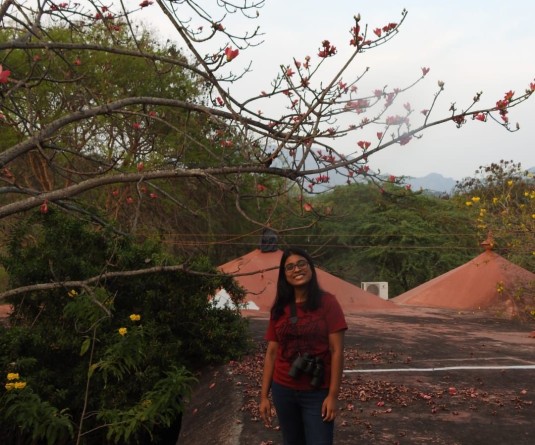
The socio-cultural and territorial aspects largely shape and constitute individuals and groups identity. Territorial implies not only the physical and boundary aspect alone but more so it includes land, natural resources and the very identity of the people who have been living within that territory since time immemorial. ‘Individuals and groups continue to live, think, and act primarily as members of their various territorial communities’ (Duchacek.1986). Identities are deep-seated in ones culture, history, religion, and land. In the present context it is the territorial entity i.e., the ‘State’ where individuals and groups identities are protected and governed. Factors like historical, socio-economic change, changing nature of political organization etc. deeply influenced the assertion of identity politics. We can envision the impact of socio-economic change, cultural change, political organizations, or government policies in shifting the nature of the conflict over time from one intersection to another or even into a non-ethnic location. Often ethno-territorial groups are considered as essentially a sub-nation within the present nation state.
Individuals and groups usually give their effective allegiance to the territorial entity i.e., village, state and emotionally identify with it. Modern nation-states are territorially organized for political action and therefore often considered the ethno-territorial communities as “stateless nations”. This situation exists in many countries like India, Soviet Union, Israel, Yugoslavia, Czechoslovakia, Malaysia, and Canada. While political authority and legitimacy remain territorial-bound, boundaries are also being pounded and infiltrated by various trans-frontier flows. These flows are made up of migrating individuals and groups, products, energy, technology transfers, drugs, pollutants, corporate transnational activities, cultural exchanges, media messages and signals, as well as—a relatively new phenomenon—international activities initiated by non-central governments in search of foreign investment, trade, and tourist currency.
Territorial community is an aggregate of individuals and groups who are aware of their bonds of identification with each other as well as with the past, the present, and hopes for the future of their area (Duchacek.1986). Today, the dynamics of State forces both territorial and non-territorial like cultural appropriation; education, employment, media etc. have challenged the cohesiveness of individuals and groups identity. Thus, there are two processes, firstly, socio-cultural base identities are diluted by the forces of globalization and secondly, there is a strong process of identity consciousness among the smaller ethnic groups in many parts of the world. The later is more intensified in a country where there is a diverse culture, religion, tribes etc.
It is imperative to know that modern political action are implemented and carried out on territorially organize institution called the State. Division of political power within the federal state is also done on territorial basis. Political geographers have analyzed the role of State territorial ordering and spatial compartmentalization as constituting the ‘political compartments’ within which control mechanisms are implemented and political hegemony are maintained (Murphy: 1989, Taylor: 1994). ‘Modern federal system is based on the fundamental territorial division of power, so that territory becomes the basis for political action’ (Elazar 1987). ‘Federalism and its kindred terms—e.g., “federal”—are used, most broadly, to describe the mode of political organization which unites separate polities within an overarching political system so as to allow each to maintain its fundamental political integrity. Federal systems do this by distributing power among general and constituent governments in a manner designed to protect the existence and authority of all the governments. By requiring that basic policies be made and implemented through negotiation in some form, it enables all to share in the system’s decision-making and decision-executing processes’ (Elazar 1968).
The term “federalization”, for example is often used to describe the process of combining territorial communities that previously had not been directly joined into a new nation or a new unit of common interest, policy and action. Hence, territory plays a major role in shaping the geographical basis of social and political organizations in a federal system. ‘As water is for fish, federalism is the appropriate element for territorial communities that, conscious of their separate identities, desire self-government, yet hope to achieve additional objectives by combining their efforts and domains into a composite national whole, both distinct from and interacting as a unit with other nation-states’ (Duchacek).
According to Dion, “the ethic of federalism is a necessary cohabitation of cultures” Elazar uses ‘thinking federalism ‘primarily, to emphasize as a means to be used for reconciling the demands of particularistic ethnic/sub-nationalism, while maintaining the wider unity of the state. The main objective of federalism is, however, to preserve the unity and integrity of the federal nation state by defusing power to its regional units (Khan, 1998). Managing this diverse regional aspiration and providing them a space for political rights is a challenge faced by any multi-ethnic State around the world.
The importance of ‘thinking federalism’ is mounting in such diverse society for appropriate managing and accommodation. To quote Nirmal Mukarji and Balveer Arora while describing about the Indian Federalism says “the strength of Indian democracy draws largely from its pluralism and diversity” (Mukerji, Arora, 1992). Under this circumstance the need for rethinking federalism emerge in a great way in India. Today, undoubtedly we can say that the success of a large democracy like India with its diverse social group can be attributed to democratic federalism. It is also important to note that various constitutional mechanisms have been introduced in post independent India for different regions basically to accommodate the diverse aspiration. Political scientist like Arora has called this arrangement as nothing but ‘asymmetric-federalism’ to accommodate the diverse political and social aspiration in the Indian democratic practices.
The present conflicts and problems around the world clearly reflects the growing need for state policy that recognize differences, respect and accommodate various cultural and ethnic groups and also allow them to preserve and flourish their identity. Multicultural democracies model has attempted to provide mechanisms for power sharing for accommodating diverse cultural groups. It involves sharing power territorially through federalism and its various forms. This form of power sharing is said to be relevant where minorities are territorially concentrated and where they have a tradition of self-government that they are unwilling to surrender (Human Development Report: 2004 UNDP).
The passed experiences shows that people’s movements and other regional demands in India were responded by adopting federal principle i.e., territorial division for the purpose of administrative convenience so as to manage ethnic diversity. For instance the drawing and redrawing of administrative-territorial boundaries in India in the early 1950s on the basis of linguistic homogeneity and the Northeast State re-organization in the early 1970s clearly testifies applying federal principle in solving people’s aspirations and rights. In this way, Indian State have to a great extent succeeded in keeping the social diversity but seemed to have failed politically in bringing final settlement to ethnic base conflict in the sub-continent.
India is a vast country both in terms of territory and social compositions with multi-linguistic group, religion and numerous ethnic groups. Today, the growing assertion of communal politics and ever increasing demand for identity by the ethnic minority is what concern and bothered Indian federal state. We may recall that the creation of the present Nagaland state in the 60s is part of the federal package/arrangement to accommodate the aspirations of the Nagas at that time. However, despite this arrangement the Nagas realized that the present arrangement has failed to keep the Nagas as one political community.
In recent years, the Nagas assertion for territorial integration/unification has become stronger and this assertion clearly reflects their aspiration to protect and utilize their land in their own genius. The demand for territorial integration of the contiguous areas of the Nagas is a direct contestation on the existing politico-administrative territorial arrangement in the Northeast region (states). Secondly, This has created a kind of conflict situation between the Nagas and other neighboring communities in the northeast region especially with the Meiteis over the territorial issue particularly in Manipur.
Movements like that of the Nagas is deeply rooted in their belief that they have a cultural, historical and political right, which is unique and aspire to live as one political community within a defined territorial entity. The nature of the Nagas’ struggle and solution calls for re-drawing of not only states boundaries of the Northeast region (Assam, Arunachal Pradesh and Manipur) but also international boundary of Indo-Burma. Conceding to the Nagas demands will largely determine the future political development in the region in general and Nagas in particular. In this context it is pertinent to ask what should be the mechanism to solve and how Indian State should respond to this more than a half old century problems? Why Nagas demand for territorial integration of all the contiguous areas is so vital, and why survive till date? The crucial questions for both GOI and Nagas are; to what extent the federal device will satisfactorily settle and respond and concede to the demand put forward by the NSCN’s charter of demands “special federal relations”? Equally important is to what extent the Nagas will accept the future federal arrangement? The Nagas struggle for recognition in the political and cultural realm certainly pose a great challenge to the Indian federal State hence, rethinking Indian federalism is imperative.
Ningreingam Shimrah, Lecturer, Department of Political Science,
Baptist College, Kohima




